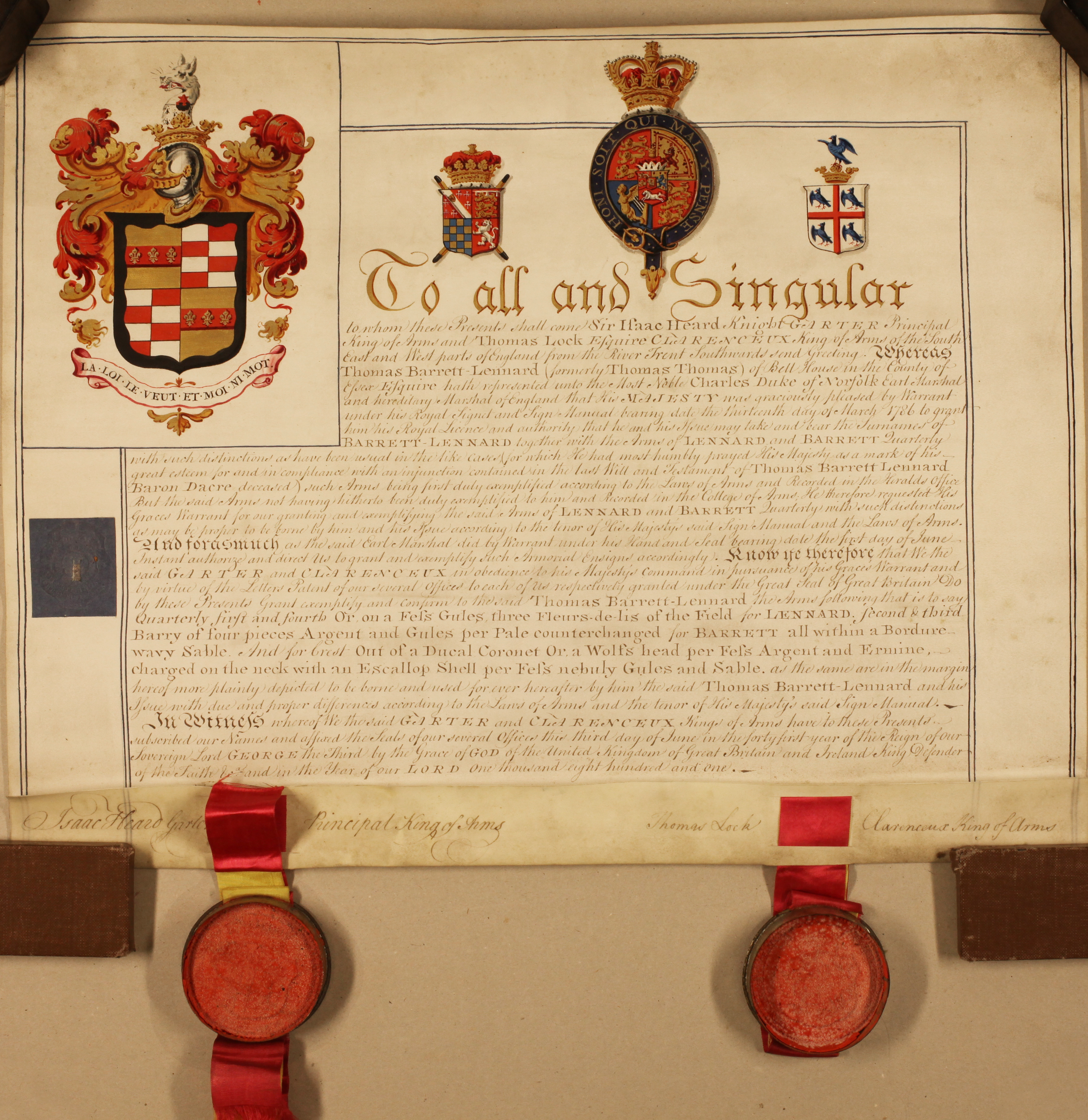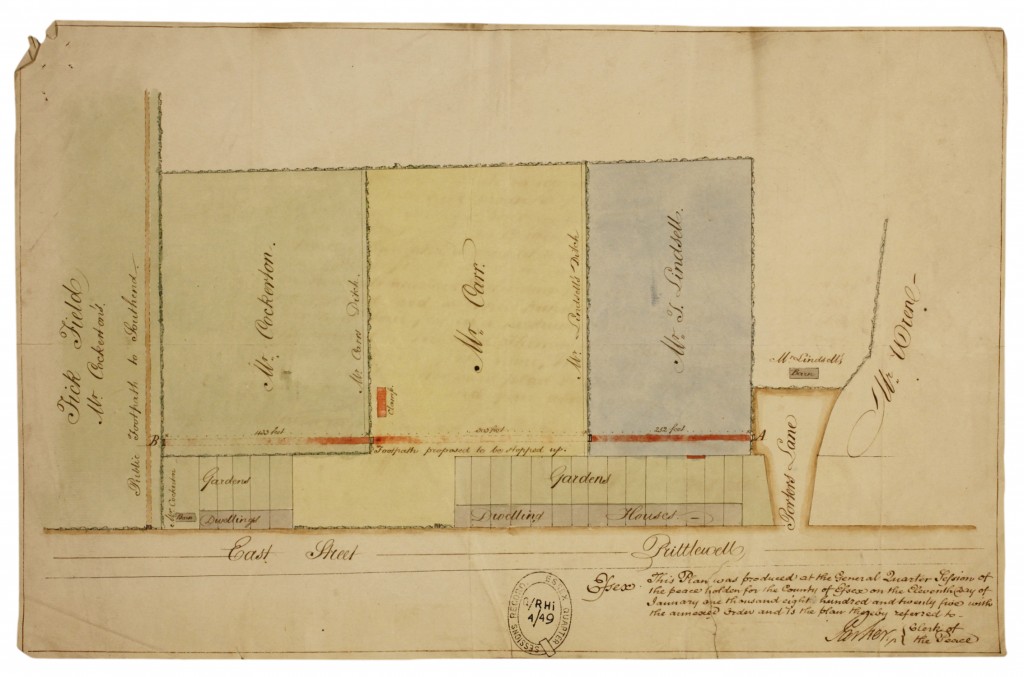With Julie Miller

Hi, I am Julie Miller and I am finishing my second year as a part-time History MA student at the University of Essex. In the summer of 2019 I won a research placement at the Essex Record Office to transcribe and research a handwritten 18th century Journal by a Saffron Walden Quaker called John Farmer. He is now the subject of my Masters’ dissertation and ongoing research.
When the lockdown was announced my stepdaughter and ten-year-old granddaughter moved in with us so we could all help look after each other. This means the house is not quite as peaceful as before. It’s been very special spending time with them, but Nanny Jules is now in charge of home schooling a very reluctant reader. We have found comic poetry a great resource and my disinclined pupil is enjoying her reading much more. My husband is a Flour Miller and designated a key worker so he is working a lot of extra shifts, day and night so I am trying to keep everything running smoothly for him too.
Where is your office?
Currently my office is a summer house in the garden. Called Miller’s Rest, it was a gift from my husband for my 40th birthday and I usually use it as an art studio. We have rigged up a rudimentary power supply and I’ve moved all my research materials and laptop up there so I can work in peace. My desk is a curious bit of Colchester history. It was made for my Uncle out of offcuts of coffin oak from the Co-op Funeral Service workshops many years ago and I inherited it when he passed. Because its coffin wood it’s a bit narrow, so the laptop doesn’t quite fit, but I manage, and I like the quirkiness of it. I have a really good office chair though and that makes working at an odd desk much more comfortable.
I have a radio because there is always time for Women’s Hour, and I also have a 1920s gramophone and a collection of wonderful 78s by the stars of yesteryear like Elvis, Doris Day, Bill Hayley, Dean Martin and Glen Miller. Sitting out there in the evenings with a drink and the gramophone is a real treat, till the mosquitoes from the pond start munching.
Do you have a view out of a window when you are working? What is it and is it a distraction?
From the open doors of Miller’s Rest I can see all the way back down the garden to the rear of our 1920s house where an ill-thought out 1970s extension does nothing to improve the view. However the side window in front of my desk looks out onto trees overhanging an ancient pond which is currently full of tadpoles. The sparrows enjoy balancing on twigs over the pond to get a drink, or maybe a nibble on a tadpole and they are very entertaining. The garden is always distracting, and I am drawn to my greenhouse at this time of year, but I am trying to be disciplined. Sadly there is often a full washing line too.
What Essex research are you catching up on? Will this result in something published?
For the last 4 weeks I have been doing a job for one of my tutors, a 22,000-word transcription of a research interview she did with a professor of Chinese Religious History. Not very Essex at all admittedly, but now that’s finished I am writing an article for the magazine for the Essex Society for Family History. I was very lucky to win their 2020 Award for my research into John Farmer. They want to know more about him for their readers, and I am happy to oblige.
After the article, I will be turning my full attention to completing my dissertation, which will cover the work I did on the John Farmer Journal while I was at the ERO, and subsequent research I have done to flesh out his later story. He was a remarkable man who visited the Native Americans and the Caribbean Islands in the 1710-1720s but was thrown out of the Philadelphia Quakers for challenging them to give up slaves and slave trading. He was described as a man of ‘indiscreet zeal’. He was way ahead of his time and deserves to be recognised. Neil Wiffen at the ERO has challenged me to write a book about Farmer before 2024 which will be the 300th anniversary of John Farmer’s death. No pressure there then Neil! I will also be continuing my research into John Farmer and his wife Mary for my upcoming PhD which I hope to start in October (lockdown permitting).
Do you set yourself a strict timetable to work to or just pick up your research as and when?
I try to do at least two hours a day, more if possible but with the cooking and work associated with extra people in the house it is proving tricky. My Supervisor is starting to make chivvying noises and asking to see draft chapters, so I am beginning to feel the pressure.
Do you have a favourite online resource?
I have been lucky in that I was able to get lots of copied material from the ERO while I was on my placement, and I have visited several times since so I haven’t needed to rely on much online research. But there are some interesting online resources in America and the UK relating to Quaker history and I have had an enjoyable ongoing discussion with a genealogist from Mobile, Alabama who had posted on the Find a Grave site, to try to resolve some errors in the family history relating to John Farmer. Note to any researcher – do not upset an American genealogist, they take their work very seriously and luckily I was able to supply documentary proof of my research and they corrected their information. I think that is quite an achievement.
What is your favourite research beverage and snack?
Well, as I am writing this on Easter Monday I suppose I would have to say Easter Egg. However on a (what passes for) normal day I would have a ham sandwich and a packet of crisps washed down with water or diet coke. Our family have a long tradition of tea or coffee and cake at 4pm, so that is usually when I stop work and we all come together to watch the BBC virus update before planning the evening entertainment.
Apart from the news, is there anything that distracts you from you research?
One of my university colleagues has set up a regular quiz on Zoom, several times a week and we all join in from our sofas which has been a lot of fun. My granddaughter has a liking for gambling with grandad’s pennies and we play Newmarket sometimes. I like folk music so enjoy watching the online live sessions from people like Kate Rusby, Chris Leslie and While and Matthews and being a nosey parker I like seeing their homes. Also I belong to a local shanty group and we have been using Skype to do virtual unplugged singing sessions. Its been funny seeing everyone placing themselves in front of bookcases.
Along with that it’s regular calls to family, I am missing my little grandson a lot, and am so thankful that social media allows us to stay in touch.
What are you most looking forward to when you are able to visit ERO again?
I am desperate to get back into the Colchester and Saffron Walden Quaker minute books from the 17th and 18th century as I am trying to trace John Farmer in both towns, filling in some of the gaps, and also looking for more information about his amazing wife and daughters who all had their own stories to tell. Also Mary Farmer and her daughter Mary Fulbigg left behind journals that still need transcribing, so I have lots of work ahead of me.














